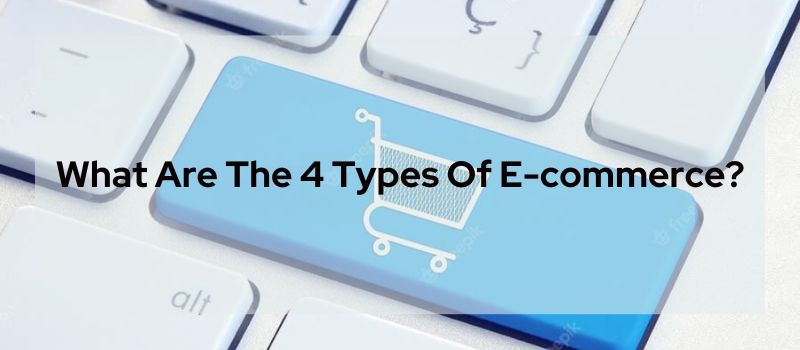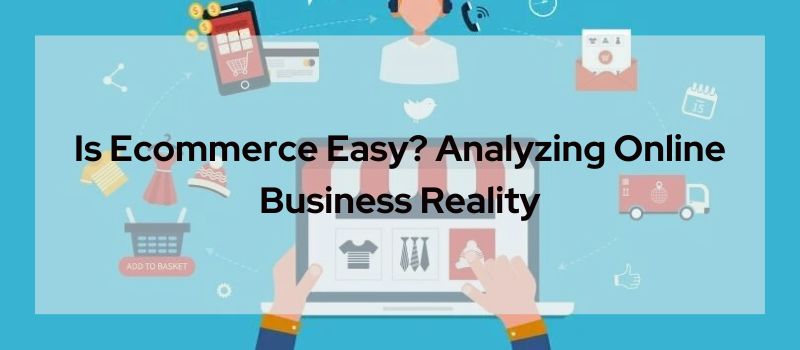E-commerce has evolved rapidly over the past few decades, with customer expectations and business practices changing just as quickly. To keep up, online retailers must follow core principles that lead to success.
It is where the 5C model comes in handy. The 5Cs provide a framework for optimizing the customer experience and boosting conversions. With decades of experience in ecommerce, let’s explore the 5C model of e-commerce in more depth so you can apply these principles to your online business.
Contents
- 1 Customer Experience
- 2 Cost
- 3 Convenience
- 4 Communication
- 5 Control
- 6 Optimizing your online business across these 5Cs leads to several important benefits:
- 7 Element Of The 5c E-commerce Model
- 8 FAQs
- 8.1 Q1: What are the 5 Cs of ecommerce?
- 8.2 Q2: How does customer experience affect ecommerce?
- 8.3 Q3: Why is cost control important in ecommerce?
- 8.4 Q4: How can ecommerce provide more convenience?
- 8.5 Q5: What communication channels are important in ecommerce?
- 8.6 Q6: How does giving customers control improve ecommerce?
- 9 Conclusion:
Customer Experience
The first C focuses on the customer experience you provide through your e-commerce site and interactions. Some key elements include:
- Website design and usability – Your site should be visually appealing and incredibly easy to navigate. Clear menus, minimal clicks to purchase, mobile optimization and intuitive checkout, are essential.
- Product information – Comprehensive details, images and videos help customers make informed buying decisions. Focus on being transparent.
- Reviews and recommendations – User-generated content offers social proof. Let customers post reviews and leverage data to provide personalized product recommendations.
- Customer service – From automated FAQs to live support, make it effortless for customers to get their questions answered. Quickly resolve any issues that arise.
Optimizing these facets results in an enjoyable and seamless customer experience. Satisfied customers are much more likely to complete purchases and become repeat buyers. It’s equally important to minimize friction points that cause frustration. Any difficulties can quickly send customers to competitor sites.
Cost
From warehousing to payment processing, e-commerce involves many costs. Careful financial analysis and cost optimization should be ongoing priorities. Here are some examples:
- Analyze fulfillment and shipping expenses. Are you getting the best rates? Can you negotiate lower prices as volumes increase?
- Assess infrastructure costs like servers and bandwidth. Growth may require scaling hardware to maintain performance.
- Review platform subscription fees and transaction processing rates. Switching providers could reduce certain costs.
- Evaluate technology spending. Are there cheaper software alternatives with the features you need?
- Consider automation tools that streamline processes like inventory management and order processing to save on labor.
- Enhance logistics planning to lower outbound shipping costs and reduce transfer fees.
- Institute discounts, loyalty programs and bundles to incentivize higher order values and improve margins.
Controlling expenses improves profitability. Reinvest these savings to boost capabilities and the customer experience further.
Convenience
Today’s buyers expect immediacy and simplicity. The more convenient you can make shopping, the better. Some proven tactics include:
- Fast, inexpensive shipping – Absorb costs to offer free standard shipping. Provide expedited delivery options.
- Multiple payment methods – Accept all major credit cards plus PayPal, Apple Pay and other digital wallets. Allow installment plans.
- One-click purchasing – Let customers securely save payment details for streamlined checkout of every order.
- Easy returns and exchanges – Allow online returns and flexible exchange policies to remove risk. Provide prepaid shipping labels and instant refunds.
- Buy online, pick up in-store – For physical retailers, bridge the online/offline experience.
- Timesaving account features – Allow customers to store preferences like shipping addresses to populate automatically at checkout.
- Mobile optimization – Design and test your site for ease of use on smartphones to facilitate on-the-go purchases.
The more seamless your e-commerce experience, the less likely customers will abandon their shopping carts. Think end-to-end and eliminate any points of friction.
Communication
Consistent communication is vital for building relationships with customers. Ensure your messaging aligns across channels and stages:
- Targeted marketing – Segment your audience to deliver personalized offers and recommendations via email, social, etc.
- Product pages – Keep descriptions, images and videos clear, concise and optimized for search. Include specifications and customer reviews.
- Order confirmation – Immediately send confirmation emails with order details and tracking information.
- Shipping updates – Keep customers informed if orders are delayed and when items ship.
- Ongoing engagement – Nurture customers post-purchase with content and special offers to drive repeat sales.
- Consistent branding – Maintain the same logo, images, tone and style across your site, email, social, ads and packaging.
- Seamless omnichannel – Bridge communication across online and offline channels to provide consistent messaging and experiences.
Proactive outreach that provides value builds trust. Listen to feedback and have conversations. By regularly engaging customers, you can turn one-time buyers into lifelong advocates of your brand.
Control
Giving customers more control over their shopping experience leads to greater empowerment and satisfaction. Allow them to:
- Manage preferences and details associated with their user account.
- Filter products and refine searches to find what they want easily.
- Configure products with customizable options and components.
- Select delivery dates and locations.
- Save payment methods or choose at checkout.
- Choose how often to receive communication from your brand.
- Provide feedback and see that input directly impacts improvements.
- Access self-service account management and support content.
- View order history, track shipments and print past receipts.
- Receive real-time notifications about order status changes.
- Easily initiate returns or exchanges on their own.

The key is implementing technology and processes that give customers more autonomy. Of course, also guide them with recommendations and gentle nudges. Striking this balance leads to satisfied users who feel empowered by the shopping journey.
Looking back at the core pieces – stellar customer experiences, optimized costs, unrivaled convenience, strategic communication and increased control – it becomes clear why the 5Cs serve as a solid e-commerce framework. Next, let’s talk about the benefits of following this model.
Optimizing your online business across these 5Cs leads to several important benefits:
You’ll meet and exceed evolving customer expectations. As buyers demand more personalized, streamlined and flexible e-commerce, the 5Cs allow you to stay ahead of trends and anticipate emerging needs. Customers will appreciate that you offer exactly what they want.
You’ll gain a competitive edge. Many e-commerce companies need to pay more attention to key elements of the user experience like mobile optimization, convenient fulfillment options and transparent communication. By executing well across all 5Cs, you’ll differentiate yourself and capture market share.
You’ll see higher conversion rates. Removing friction and creating seamless user journeys directly translates to improved conversions. Customers will be more likely to complete purchases when you nail the 5Cs.
You’ll build loyalty and retention. Delighting customers leads to repeat purchases and lifelong loyalty. Consistently meeting their needs across the 5Cs makes your brand their preferred choice over competitors.
You’ll gain critical insights. Data related to the 5Cs provides valuable analytics into your customers and operations. These insights allow you to make smarter decisions and continuously optimize.
It’s clear why successful e-commerce brands constantly focus on improving the core components of the 5C model. Now, let’s discuss some proven strategies and tactics to help implement the 5Cs for your online store.
Element Of The 5c E-commerce Model
If you want to excel at each element of the 5C e-commerce model, here are some best practices to follow:
Customer Experience Strategies
- A/B tests alternate page designs and flows to optimize conversion rates.
- Monitor site analytics to identify usability issues and opportunities.
- Feature high-quality images, videos and 3D models to showcase products.
- Curate user-generated content like customer photos and reviews.
- Develop personalized product recommendations based on purchase history and browsing.
Cost Reduction Tactics
- Leverage dropshipping or partnerships to avoid holding inventory.
- Renegotiate supplier and vendor contracts as your order volumes increase.
- Implement automation tools to reduce repetitive manual tasks.
- Outsource specialized functions like marketing and web design.
- Optimize packaging to reduce material costs and transit damage.
Convenience Factors
- Offer customers self-service account management and support options.
- Integrate services like PayPal for seamless checkout.
- Ship from local warehouses to enable fast, low-cost delivery.
- Allow shoppers to purchase online and pick up in-store.
- Develop mobile apps and mobile-optimized sites to facilitate purchases on smartphones.
Communication Best Practices
- Use marketing automation workflows to send behavior-based emails.
- Retarget online visitors with personalized recommendations.
- Share curated content like tips and how-tos to nurture leads.
- Use chatbots and interactive FAQs to provide 24/7 support access.
- Respond promptly to questions and feedback on social media.
Customer Control Techniques
- Offer group customization so customers can collaborate on designs.
- Provide guided selling options with quizzes to narrow choices.
- Let shoppers manage details like preferred payment methods and shipping addresses.
- Give account dashboard access to view order history and shipment tracking.
- Send proactive notifications when order status changes.
Mastering all components of the 5C model involves in-depth work across marketing, product, operations, analytics and technology. While challenging, the revenue growth and profitability payoff make it well worth the investment. E-commerce constantly evolves, so you must continuously assess each area to remain competitive.
Wow, we covered a lot of ground, looking at how to build a customer-centric e-commerce experience. Let’s recap some of the key takeaways:
- The 5Cs – Customer, Cost, Convenience, Communication and Control – represent core principles for e-commerce success.
- Optimizing the customer experience across all touchpoints should be the top priority.
- Managing costs through efficiency gains and scaling is crucial for maintaining profitability as you grow.
- Providing unmatched convenience and flexibility removes barriers to purchase.
- Strategic, personalized communication is vital for acquisition and retention.
- Giving customers more control improves satisfaction and loyalty.
- Executing well across the 5Cs drives conversion rate optimization.
- Continuously improving based on the 5C model helps you stay competitive.
- Collecting and analyzing data provides insights to enhance each area.
As the e-commerce landscape evolves, customers will expect even more personalized and streamlined experiences. Emerging technologies like virtual reality and voice commerce will enable new ways to shop. Data will get even deeper.
FAQs
Q1: What are the 5 Cs of ecommerce?
The 5 Cs are Core aspects of ecommerce success: Customer experience, Cost control, Convenience, Communication, and Control. Optimizing these areas improves conversions.
Q2: How does customer experience affect ecommerce?
Positive experiences (easy site navigation, product info, reviews, service) increase sales. Negative experiences from poor design or friction points increase abandonment.
Q3: Why is cost control important in ecommerce?
Careful expense management (shipping, tech, fees, inventory, etc) improves profitability so merchants can reinvest in better capabilities.
Q4: How can ecommerce provide more convenience?
Fast shipping, multiple payment options, easy returns, buy online & pickup in-store, and account features like saved details all add convenience.
Q5: What communication channels are important in ecommerce?
Email, on-site content, social media, ads, and customer service interactions should provide consistent messaging/branding across channels.
Q6: How does giving customers control improve ecommerce?
Self-service account management, order tracking, notifications, saved preferences, etc., give customers more autonomy, convenience and satisfaction.
Conclusion:
As we wrap up this deep dive into the essential 5C framework for e-commerce success, it’s clear that obsessing over the customer pays dividends. Providing unmatched experiences, convenience, communication and control creates devotees who become your best marketers. Pair this customer-centric mindset with smart cost optimization; you have a proven formula for online retail.
While the 5Cs may seem simple, mastering the execution requires significant effort. However, the enhanced revenue and profitability justify going the extra mile. Ultimately, e-commerce comes down to people, not products. Put the customer first in everything you do, and let the rest fall into place. What aspect of the 5C model resonates most with you and your business? Which improvement might make the biggest impact on your digital storefront? We would love to hear your takeaways in the comments!
Optimize Your E-Commerce Strategy with the 5C Framework.
Read More:



